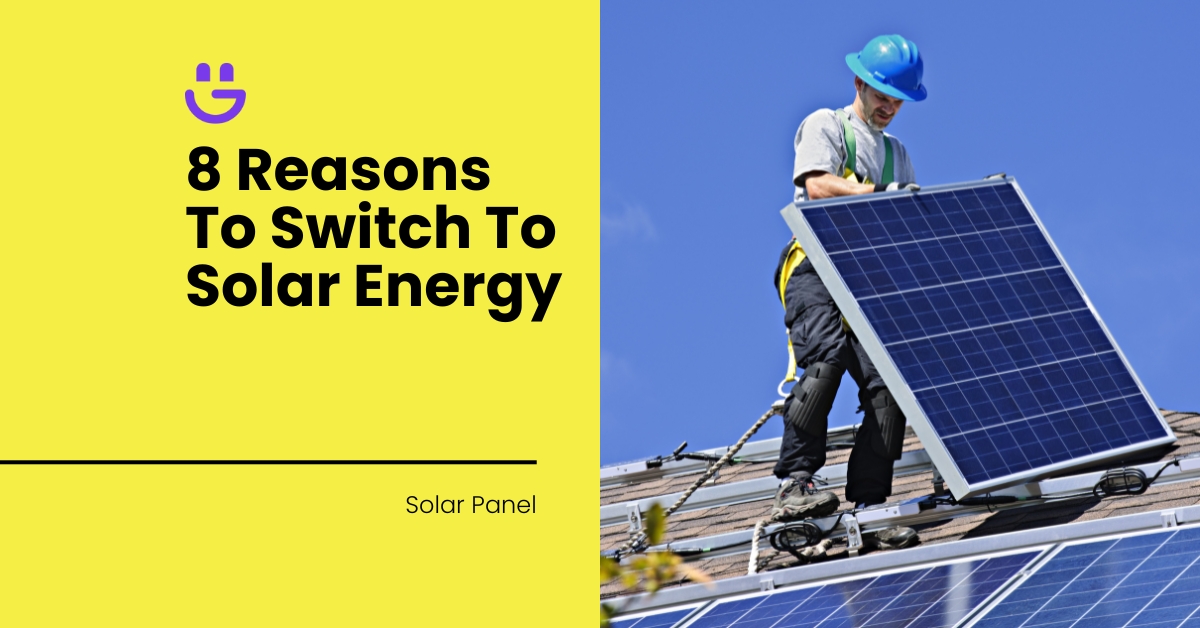Last Updated on January 13, 2025
Cutting down on your energy bill can be the key to getting more bang for your buck. Something as simple as knowing how much electricity a washing machine uses can help you save thousands in the long haul.
How do you do this? The answer is simple – estimating and understanding appliance energy usage and breaking down the numbers to make informed decisions. From cost calculations to practical game plans for reducing energy expenses, Eco Happy will be your guide for home energy management.
Contents
- 1 Understanding Energy Usage
- 2 Estimating Appliance Energy Use
- 3 How Much Energy Do Your Appliances Consume?
- 3.1 How Much Electricity Does A Desktop Computer Use?
- 3.2 How Much Electricity Does a Laptop Use?
- 3.3 How Much Electricity Does a Kettle Use?
- 3.4 How Much Electricity Does A TV Use?
- 3.5 How Much Energy Does a Washing Machine Use?
- 3.6 How Much Energy Does One Lightbulb Use?
- 3.7 How Much Electricity Does a Microwave Use?
- 3.8 How Much Energy Does a Tumble Dryer Use?
- 4 Cost Calculations And Estimates
- 5 Reducing Energy Costs
- 6 Energy Efficiency Rating
- 7 FAQs
- 8 Conclusion
Understanding Energy Usage
Household appliances contribute greatly to your electricity bill because of how much energy they consume and their usage patterns. Did you know that wet appliances (such as washing machines) are the biggest users of energy? They take up about 14% of your electricity costs. Cold appliances take up the second largest amount and use about 13%.
Other appliances, such as consumer electronics and cooking appliances, add about 6%, while lighting takes up to 5% and cooking appliances a mere 4%.
By being more mindful about using certain appliances, you could reduce your overall energy consumption and have lower energy bills. For example, you could wash clothes at lower temperatures, buy energy-saving appliances, and turn off your lights when you’re not in the room. Even something as small as using microwaves instead of ovens would be beneficial.
Why knowing your energy usage matters
Knowing how much your appliances cost to run is important because it educates you to make wiser choices about your electricity usage and utility bills. Every appliance and device in your home, from washing machines to charging your cell phone, contributes to your overall electricity bill every month.
By improving your habits, you can cut back on unnecessary costs. If you want to gain insights into which appliances are the most energy-intensive, you’ll need to monitor and calculate your energy usage. You’re not in this alone, though – we’ll show you how it’s done!
Besides contributing to your cost savings, it will also help the environment by promoting sustainability and reducing energy demand.
Costs are always rising, and managing your energy usage will only benefit your financial savings and the environment.
Estimating Appliance Energy Use
When it comes to determining how much energy common household appliances use, it’s vital to understand the factors that contribute to your overall energy use. The UK’s structure on energy costs is governed by the Energy Price Cap and Energy Price Guarantee. They rely on Typical Domestic Consumption Values (TDCVs) to ensure fair pricing.
Every two years, these values are determined and provide a glimpse into the average energy consumption of general households. They take into account factors such as size, efficiency, and usage patterns.
To get a better grasp on the energy consumption of appliances, let’s take a look at the common usage patterns and power ratings of some daily household items:
- Tumble dryer: A single tumble dryer cycle can use about 4.5 kWh.
- Fridge-freezer: On average, a fridge-freezer consumes about 1 kWh every 26 hours.
- Electric oven: An electric oven may require around 2 kWh for 30 minutes of use.
Understanding how these figures work will allow homeowners to see where to use some of their appliances less.
Let’s look at the energy usage and estimated costs of three different household appliances. These are general estimates, and the actual costs may vary based on your location and personal usage.
- Fridge-freezer:
- Average energy usage: 38 watts
- Estimated monthly cost (based on 3 hours of daily use): £4.05
- Electric oven:
- Average energy usage: 4,000 watts
- Estimated monthly cost (based on 3 hours of daily use): £16.80
- Tumble Dryer:
- Average energy usage: 2,250 watts
- Estimated monthly cost (based on 3 hours of daily use): £9.45
How Much Energy Do Your Appliances Consume?
Do you have an idea of how much electricity your appliances cost to run yet? If not, we have some examples of power ratings and consumption patterns of common appliances. Let’s explore a few factors that might help you make smart energy choices.
Average power rating and consumption patterns:
- Supplementary heating (1,000 – 3,000 watts): 28 to 85 pence per hour
- Kettle (2,500 – 3,000 watts): 71 to 85 pence every hour
- Grill/oven (2,000 – 2,400 watts): 57 to 68 pence per hour
- Microwave (700 – 1,400 watts): 20 to 40 pence per hour
- Fridge-freezer (100 – 300 watts): 2.8 to 8.5 pence per hour
How Much Electricity Does A Desktop Computer Use?
A typical desktop computer in the UK uses between 100 to 200 watts per hour, depending on its components and workload. On average, this equates to 0.1 to 0.2 kWh of electricity per hour.
If you run your desktop for 8 hours a day, it would consume approximately 1.2 kWh daily. At the current UK rate of around 30p per kWh, this adds up to 36p per day or 4.5p per hour.
How Much Electricity Does a Laptop Use?
A typical laptop in the UK uses between 20 to 70 watts per hour, depending on the model and usage. On average, this is about 0.02 to 0.07 kWh per hour.
Running a laptop for 8 hours a day consumes roughly 0.16 to 0.56 kWh daily. With the average UK electricity cost of 30p per kWh, this would amount to 4.8p to 16.8p per day, or approximately 0.6p to 2.1p per hour. Laptops generally use much less energy than desktop computers, making them a more energy-efficient choice for daily tasks.
How Much Electricity Does a Kettle Use?
A standard kettle in the UK typically has a power rating of around 3,000 watts (3 kW), using approximately 0.11 kWh of electricity to boil 1 litre of water. At an average cost of 30p per kWh, heating 1 litre would cost around 3.3p.
For a typical four-cup boil (with each cup around 250 ml, or 0.25 litres), this would require approximately 0.11 kWh. The cost to boil enough water for four cups of tea or coffee is therefore:
0.11 kWh × 30p per kWh=3.3p
How Much Electricity Does A TV Use?
A typical TV in the UK uses between 40 to 400 watts, depending on the size and type (LED, LCD, or OLED). On average, a 55-inch LED TV uses around 100 watts (0.1 kWh) per hour.
If you watch TV for 5 hours a day, it would consume 0.5 kWh daily. At the average UK electricity cost of 30p per kWh, this would cost approximately 15p per day or 3p per hour. Larger screens and older models generally use more electricity, while modern, energy-efficient models can use less.
How Much Energy Does a Washing Machine Use?
A typical washing machine in the UK uses between 0.5 to 2 kWh per load, depending on the machine’s efficiency and cycle settings. On average, a standard load at 40°C consumes around 1 kWh of electricity.
At the average UK electricity rate of 30p per kWh, a single load would cost approximately 30p. If you run five loads per week, the weekly cost would be around £1.50.
Using an energy-efficient model or choosing a cold wash can help cut down on electricity and save you money. To keep your bills lower, try washing at cooler temperatures and wait until you have a full load before running a cycle.
How Much Energy Does One Lightbulb Use?
The energy a lightbulb uses depends on its type and wattage. In the UK, a standard 60-watt incandescent bulb uses 0.06 kWh per hour, while a typical 10-watt LED bulb uses just 0.01 kWh per hour.
How much does a lightbulb cost per hour?
At the average UK electricity rate of 30p per kWh:
- Incandescent bulbs cost about 1.8p per hour.
- LED bulbs cost around 0.3p per hour.
Switching to LED bulbs is a great way to cut down on electricity and save money. They’re much more energy-efficient than traditional bulbs and can make a noticeable difference on your bills over time.
How Much Electricity Does a Microwave Use?
In the UK, a typical microwave uses between 600 and 1,000 watts of power. Running a microwave for 15 minutes per day would use about 0.25 kWh daily, which totals around 7.5 kWh per month or 90 kWh per year.
At an average electricity cost of 30p per kWh in the UK, this usage would cost approximately:
- 7.5p per day
- £2.25 per month
- £27 per year
To reduce costs, consider using your microwave efficiently by choosing lower power settings when possible or heating only the portions you need.
How Much Energy Does a Tumble Dryer Use?
In the UK, a 9kg vented tumble dryer typically uses around 5.3 kWh per full load cycle. If you use the dryer twice a week, this adds up to approximately 636 kWh annually. At an average electricity cost of 30p per kWh, this usage translates to:
- £1.59 per cycle
- £3.18 per week
- £190.80 per year
A 9kg condenser tumble dryer uses slightly less energy, around 5.2 kWh per load, costing about £1.56 per cycle or £187.20 per year if used twice weekly.
To reduce costs, consider drying clothes on a lower heat setting or air-drying when possible.
Cost Calculations And Estimates
Cost calculations and estimates for monthly and annual expenses can be helpful tools when trying to figure out how much your appliances cost to run. Let’s compare different energy user profiles:
- Low usage
- Gas: 7,500 kWh
- Gas cost: £626
- Electricity: 1,800 kWh
- Electricity cost: £687
- Monthly energy bill: £109
- Annual energy bill: £1,313
- Medium usage
- Gas: 11,500 kWh
- Gas cost: £902
- Electricity: 2,700 kWh
- Electricity cost: £933
- Monthly energy bill: £153
- Annual energy bill: £1,835
- High usage
- Gas: 17,000
- Gas cost: £1,281
- Electricity: 4,100 kWh
- Electricity cost: £1,316
- Monthly energy bill: £261
- Annual energy bill: £2,597
Understanding your energy consumption patterns can help you determine how much electricity you end up saving. The more energy consumed, the higher the running costs.
The following factors play a role in how much energy you end up using:
- Size of your home: The larger your house, the more heat you will require, leading to increased gas consumption.
- Number of tenants: The more people you have living in your home, the higher your electricity consumption.
- Appliance efficiency: Choosing appliances that are efficient in saving energy contributes to you saving more.
The choice between tariff and meter type can also affect your running costs. Here’s how:
- Fixed tariffs: Fixed tariffs are a very stable option, offering a fixed energy price guarantee and shielding you from market fluctuations.
- Standard variable: When the market fluctuates, so will your tariffs.
- Meter types: The time you decide to use your appliances will affect your billing because of time-of-use rates.
Another factor you might not have taken into account is your geographic location. This influences your running costs due to varying network expenses such as energy delivery. Your payment method plays a role as well. Direct debits often result in discounts for paying your monthly bills on time.
Reducing Energy Costs
Who doesn’t like to save money? From small tweaks to smart charging, let’s look at some easy tips to cut back on your running costs.
Simple changes for immediate impact
- Get yourself a solar power bank to charge your devices. This will save you approximately £10 per year. It might not seem like that much, but if you apply this method to all your devices, it could result in some hefty savings.
- Keep your tumble dryer filters clean for optimal performance. By doing this, you extend your appliance’s life span and can save up to 30% of its power usage.
- Install panels behind radiators to prevent heat loss. This can boost your efficiency by up to 20%, reducing your heat expenses.
- Defrost your freezer regularly. This could save you up to 10% on its energy usage and improve its performance.
- Steam vegetables in the microwave for faster cooking.
- Using copper pans and glass dishes to cook makes for quicker cooking times.
- Use cold water in your washing machine instead of hot water.
- Set your fridge to holiday mode when you’re away and don’t overfill it.
- Don’t leave the water running unnecessarily. Save water and heating costs by closing the tap while you’re brushing or shaving.
- Always choose showers over baths. You could save up to thousands of litres of water annually, reducing heating costs.
- Turn off the shower while you lather.
- Use a broom on wooden floors instead of a vacuum. Not only are you saving electricity, but you are also burning calories.
These steps may seem easy, but they’re the first steps to take to save on electricity bills.
Long-term strategies for sustainable savings
- Your best bet would be to invest in solar power. Solar panels can reduce electricity bills by 50-90% and help you save money.
- Get home insulation. Explore government programmes that provide financial assistance for insulation improvements. This could cut your heating and cooling costs by 20%
- Energy-efficient windows can result in 15% in energy savings. Adding window films can also add more insulation.
- Install a smart meter.
- Change your lighting options. LED bulbs are known to use 75% less energy than normal bulbs.
- Join community solar and wind programmes can contribute to sustainable energy use and lower your energy bills.
Energy Efficiency Rating
Have you heard of energy-efficient ratings? Energy efficiency ratings range from A+++ to D. They serve as a compass, helping to guide environmentally conscious consumers. When choosing high-efficiency models, not only does it minimize your carbon footprint but it also contributes to you using less energy, saving the planet’s resources in the long run.
The upfront cost of energy-efficient appliances might give you second thoughts, but it acts more as a long-term investment.
The impact of switching to high-rated appliances might not show immediately; however, it can lead to significant savings annually. You could be saving up to £220 a year when upgrading to these efficient appliances.
FAQs
What appliances cost the most to run?
Here are some appliances that cost the most to run:
- Tumble dryer
- Oven
- Dishwasher
- Heating blanket
- Washing machine
- Fridges and Fridge freezers
- Kettle
- Television
What appliances are the cheapest to run?
These appliances are generally the cheapest to run:
- Hair dryer
- LED light bulbs
- Hair straighteners
- Toaster
- Lawnmower
- Microwave
- Vacuum cleaner
- Laptop
Conclusion
In a world that is fighting climate change, the importance of energy-efficient appliances can’t be overlooked. By making better and informed decisions, you not only cut your costs but actively contribute to a more sustainable environment.
Take charge of your energy usage today – use energy-efficient appliances, explore the energy price cap, and use government resources for ongoing support on your journey towards a greener lifestyle.
For more tips, guidance, and advice, reach out to the team at Eco Happy.






James Elston
Boiler Expert
James Elston is the top boiler replacement and heating expert at Eco Happy. He has over 20 years of experience in the industry, focusing on Gas Safe boiler installations and offering home-heating and energy-saving solutions to homeowners across the UK. From sourcing the most energy-efficient combi boiler to providing specialist heating advice, James ensures that Eco Happy maintains the highest standards and best customer service.